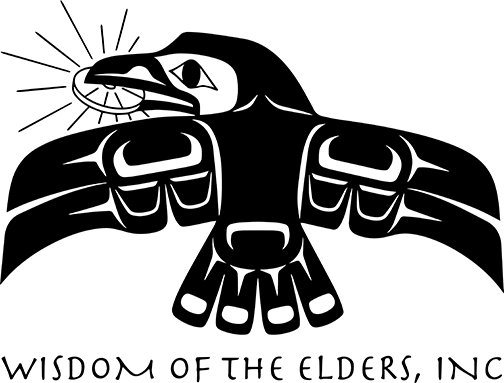Music of the Omaha
with Nico Wind
Arlie Neskahi :
The great state of Nebraska, home of the huskers, bread basket of the world, is an open sweeping land of grain and corn fields. Along the eastern edge, the Missouri River cuts through the rich soil on its way to its confluence with the Mississippi. Both the name of the state, Nebraska, and its vast lands, were once primarily the territory of the Omaha tribe of Indians. Today, on tribal rhythms, Nico Wind takes us to the land of the Omaha and explores the roots of the Powwow.
Music:
Powwow Music
Nico Wind:
Hoka hey! It’s a good day! At every grand entry, this warm greeting is extended to all. The master of ceremonies, microphone in hand, calls the dancers and drum groups to their places. Grown from small village celebrations and honoring events, today the Powwow has become a well-loved and well-established intertribal event. Here, young people shed baggy jeans and t-shirts to wear the plumage of their ancestors. Here, adults exchange work clothes and weariness for white buckskin and the swish of Grass Dance and Tail Dance regalia.
..and all move to the sound of a large Powwow drum.
Music:
Modern grass dance
Tim Grant
Some say the word “Powwow” comes from the Algonquian word ‘pawauogs’ [paw – woog] referring to shamanic practices and healing ceremonies. The word was co-opted by traveling medicine shows and elaborate Wild West shows but, eventually became the name for the annual dance celebrations held across Indian country.
Music:
Heluska Dance

Hethu'shka dancer at the Omaha Pow-wow, August, 23, 1925. Courtesy of the Nebraska State Historical Society. Photo Number: RG3882.PH:56-4 www.nebraskahistory.org
According to some, one of the most popular Powwow dances, the Grass Dance, began with the Omaha people of Nebraska. In this old recording, each verse brings in a new dancer who pantomimes his war experience and exploits.
ValentineParker Jr. is an elder and councilman of the Omaha tribe.
Valentine Parker:
My, my name is um, Valentine Parker, Jr. I’m the son of Valentine and Miniwoodhall Parker. The Hiroshka and Mahay Dance was originated here among our ancestors, Omaha people, our elders. And that, today, today uh, this dance, these two particular dances, the Grass Dance, the Hiroshka, pretty much known in Indian country. But it all started right here among the Omaha people.
Wind:
Valentine is also a traditional singer and a road man for the Native American church. He lives in Macy, Nebraska, a small reservation town along the Missouri about 80 miles north of Omaha.The name, originally pronounced oh mah haw, meant ‘those going against the wind’ or the “upstream people”.
Music:
Alice Fletcher song
In the late 1800’s a white woman from the east got interested in the Omaha. She was an ethnologist named Alice Fletcher. Over a ten-year period, Fletcher and a Ponca man named Francis La Flesche recorded over 90 wax cylinders of Omaha music. Today these recordings are housed at the Library of Congress, in Washington D.C.
Music:
Helushka Dance
In the introduction to her book on Omaha Indian music, Fletcher wrote that initially she found it “difficult to penetrate beneath the noise and hear what the people were trying to express”.
In an amusing account of a tribal event, Fletcher writes that she realized two things: she was the only white person there-and the only person who didn’t seem to be enjoying the music. She began to listen more deeply. She writes, “My effort in listening below the noise were rewarded by my hearing the music, and I discovered that there was in these Indian songs matter worth study and record.”
Music:
Mi’kachi Song
This song, recorded in 1895, is known as a Mi’kachi, or Wolf Song. It is sung by warriors as they leave the camp, asking the wolf for his cunning and strength. As in all of the songs, there is a pattern of verse and chorus sung in the diatonic scale.
Music:
Corn Song
This song accompanies the springtime ritual of the sacred corn. It tells of the stages in the life of a corn plant from germination to harvest.
Alice Fletcher lived among the people off and on for a decade, recording, and translating the songs with help from the Omaha. She died in 1929, but the songs remain. Listen to the call and response form that is so common today in Powwows across the country.
Music:
Heluska Song
So much of the Omaha’s language and music was lost in the twentieth century. The wax cylinders, scratchy, flawed, difficult to hear, are priceless to men like Valentine Parker, and his son, Tim Grant, who will be featured on today’s contemporary rhythms.
Music:
Tim Grant
The collection brings the past into the present, allowing them us to hear the music and lyrics from a hundred years ago. Musicians, young and old listen, practice, and sometimes carry the music into the dance arena.
Parker:
So today, it’s how we’re situated here among the Omaha, Omaha people. But we are very proud of the, the things the way we are, very proud of our community here, and continue to strive uh. We have a lot of hard, hard times here. We, we are a poor tribe. But we are uh, a tribe that’s very proud of our traditional ways. And we still believe our tradition, culture. We still maintain our language. So these are very important things to us.
Music:
Heluska Song
For Wisdom of the Elders, I’m Nico Wind.
Neskahi:
Tribal Rhythms is written and produced by Milt and Jamie Lee, engineered by Clark Salisbury, and hosted by Nico Wind. Thanks to the Smithsonian Institution’s Folkways Records, for the use of the Alice Fletcher recordings.


